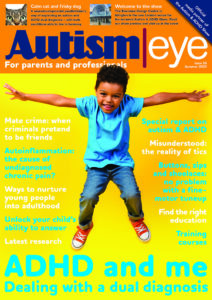Researchers are investigating how non-speaking autistic people understand speech.
A Cambridge University team is using brain imaging to reveal how non-speaking autistic people process language.

Dr Alex Woolgar is researching how non-speaking autistic people understand spoken language
The lead researcher is cognitive scientist Dr Alex Woolgar.
Inspiration from a child
She became interested in the abilities of non-speaking autistic people after working with a six-year-old child.
The child was non-speaking and used the Rapid Prompting Method (RPM) to communicate.
The researchers say the child was able to show that she was smart, imaginative and thoughtful through use of the RPM technique.
Woolgar’s belief in how well the child understood spoken language made her question the scientific understanding of autism.
It’s often assumed that autistic people who do not speak do not understand language.
Communication with non-speaking autistic people
In RPM, a person with training in the technique holds an alphabet board or a tablet.
They prompt the person to point to or tap letters, words or pictures.
Though the method has become popular with some parents and schools, a review study in 2019 said it has no scientific basis.
Woolgar said she has been “blown away” by the response from parents and non-speakers keen to see the research happen.
Participants sought
The team has recruited around 20 people to the research and is looking for more UK-based participants.
The researchers rely on electroencephalography (EEG), which uses electrodes on the scalp, to measure brain activity.
Children and adults aged between five and 40 are taking part in the research.
The scientists record brain signals when autistic people listen to spoken words and sentences.
They hope to be able to measure understanding by comparing brain responses to sentences that do and do not make sense.
Anyone interested in taking part in the research can email Woolgar here: alexandra.woolgar@mrc-cbu.cam.ac.uk
Related:
Published: 8 September 2021















